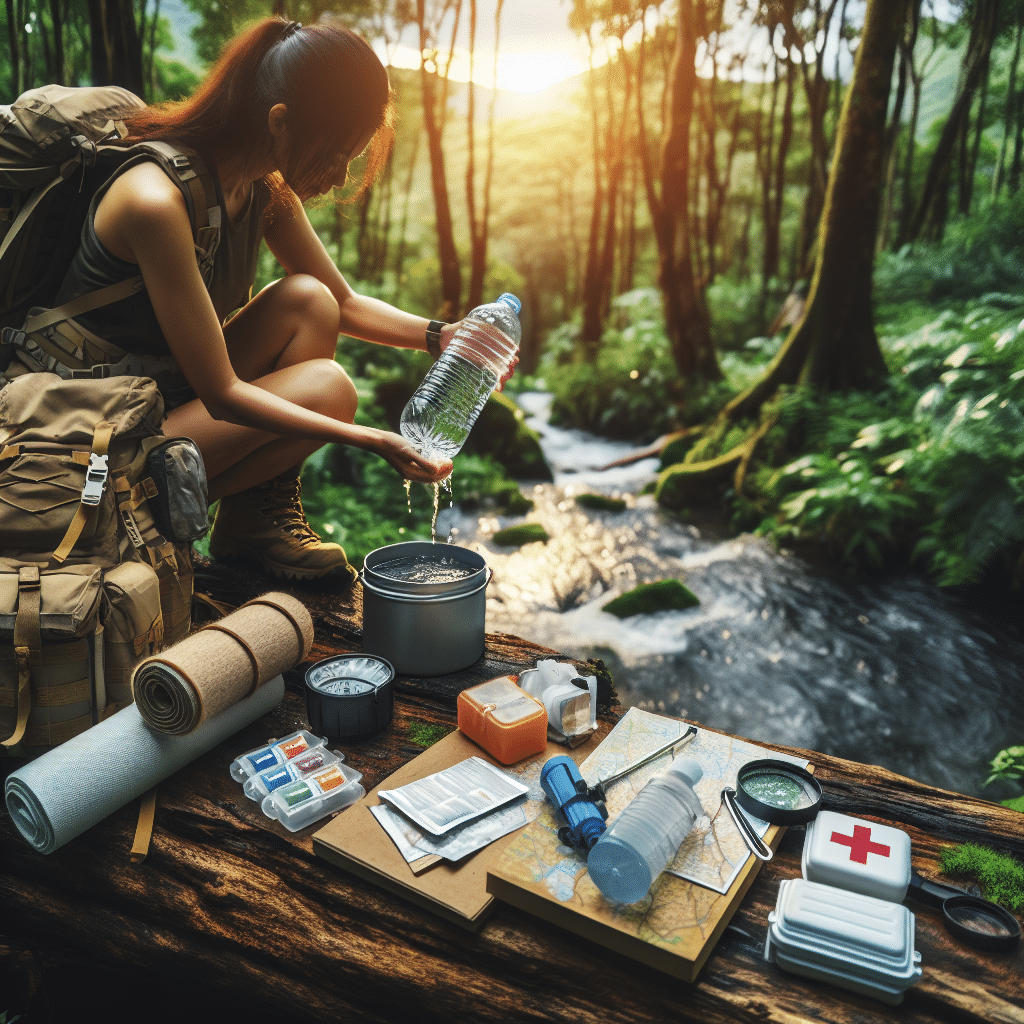Understanding Water Contamination in Hiking
When hiking, water sources can become contaminated from various sources such as animal droppings, contaminated runoff, or human activity. Understanding the potential risks associated with drinking contaminated water is crucial for maintaining your health and safety in the wilderness.
Identifying Contaminated Water Sources
Contaminated water may exhibit several signs, including discoloration, foul odor, or an unusual taste. If you spot dead vegetation or animals near the water, or if you’re near trails or campsites, proceed with caution. The presence of wildlife, particularly in marshy areas, can also indicate potential contamination.
Basic Hygiene Practices for Water Safety
Before considering any water treatment methods, practice good hygiene. Always wash your hands before handling gear or food. Footwear should be rinsed off if it has been exposed to mud or animal waste. Carry biodegradable soap for cleaning hands and utensils while ensuring you don’t contaminate the source water.
Equipment You Should Carry
-
Water Filter: A portable water filter is one of the easiest ways to purify water. Look for portable filters that remove bacteria, protozoa, and some viruses.
-
Chemical Purification: Carry iodine tablets or chlorine dioxide drops, which are effective against a wide range of pathogens.
-
Boiling Equipment: A lightweight camp stove or a portable fire kit can be used to boil water.
-
Collapsible Containers: Use BPA-free collapsible containers to store or gather water safely.
Purification Methods
1. Boiling
Boiling is the most reliable method of purifying water. Bring water to a rolling boil for at least one minute before consuming. At elevations above 2000 meters (6562 feet), increase boiling time to three minutes. Boiling effectively kills bacteria, viruses, and parasites.
2. Filtration
Using a portable water filter is an efficient way to remove contaminants while maintaining the water’s taste. Opt for filters with a pore size of 0.2 microns, effective against bacteria and protozoa. Follow the manufacturer’s instructions for setup and use.
3. Chemical Treatments
-
Iodine Tablets: Dissolve iodine in water before drinking. Wait at least 30 minutes before consuming. This method is generally effective against viruses and bacteria but less reliable against protozoa.
-
Chlorine Dioxide: Add chlorine dioxide drops, which take around 30 minutes to effectively purify water, and are effective against viruses, bacteria, and protozoa.
4. UV Light Purifiers
Ultraviolet (UV) light purifiers need batteries but can be a compact solution for eliminating pathogens. Submerge the device in a water source for the recommended time (usually around 90 seconds) to kill pathogens effectively. Make sure the water is clear for the UV light to work efficiently.
Filtering Options
Straw Filter Systems: These personal filters allow you to drink directly from the water source. They are lightweight, easy to use, and great for emergencies.
Pump Filters: These systems provide clean water via a manual pump mechanism and are ideal for large groups.
Best Practices for Collecting Water
-
Choose the Right Spot: Always collect water from lake outlets or flowing streams rather than stagnant pools.
-
Distance from Contamination: Maintain a distance of at least 200 feet from trails, campgrounds, and animal crossings when gathering water.
-
Clear Debris: Before filling, remove surface debris like twigs and leaves to avoid further contamination.
After Treatment Maintenance
After purifying water, store it in a clean, BPA-free container to avoid recontamination. Ensure that containers are sealed tightly, and avoid exposing purified water to unwashed hands or surfaces.
Health Signs to Watch
Post-hike, be attentive to signs of gastrointestinal disturbances such as nausea, vomiting, or diarrhea. If you experience these symptoms after consuming water, see a healthcare professional immediately.
Educate Others
If you’re with a group, ensure everyone is educated on the risks of water contamination and the importance of proper treatment methods. Understanding the significance of water safety can be critical in maintaining health while hiking.
Regular Equipment Checks
Before heading out on any hike, inspect your water treatments and filters to ensure they’re functioning correctly. Replace any damaged parts or expired tablets.
Emergency Protocols
In case of suspected waterborne illness, stay hydrated with safe water sources and seek medical assistance if symptoms persist. Carrying an emergency first aid kit with general medications can be helpful in such situations.
Staying Informed
Always check for local water quality reports when hiking in new areas. National and state parks often have resources available regarding water safety and quality.
Conclusion
Being prepared and knowledgeable about treating minor water contamination instances will ensure safer and more enjoyable hiking experiences. Carry the right equipment, use proper methods, and always prioritize health.
